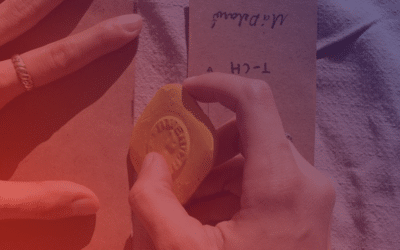Through the GRACE satellite program, researchers have shown that Greenland’s ice sheet has been losing about 280 billion tons of ice each year—the equivalent of close to 1.5 million Olympic swimming pools. For glaciers like those in Greenland and Antarctica, most of this meltwater ends up in the ocean—with already noticeable consequences for rising sea levels.
Better predictions of future sea level rise will require us to understand what meltwater is doing inside—and especially underneath—glaciers. But to do this, researchers need to take measurements through a glacier. Earlier this month, electrical engineer and glaciologist Dr. Michael Prior-Jones and his collaborators in the UK, Switzerland, Denmark, and Canada published their redesigned version of a wireless subglacial probe—the Cryoegg—to help study the inner “plumbing” of glaciers.
Glacial obstacles
The meltwater flowing through and underneath glaciers can end up in small pockets, large lakes, or fast-moving rivers—each of which destabilizes the overlying glacier to different degrees. Subglacial lakes can cause entire sections of the glacier to shift. By contrast, subglacial rivers channel meltwater into a smaller area, causing comparatively less glacial movement.
Researchers have used radio signals and satellite imagery to map the size of hydrological networks and lakes beneath glaciers. But not much is known about how fast this water is moving or how long it spends meandering on its way to the ocean. The only way to answer these questions is to take measurements under the glacier.
Glaciers, and especially glacial crevasses and drain holes, called moulins, are extremely hazardous to explore in person. Meltwater pours through moulins at up to 4 metric tons per second, and the ice shifts frequently. Glaciologists have tried experimental setups on the tops of glaciers, as well as dangling probes through boreholes in the ice sheet. But these typically only last a few weeks before the glaciers move enough to snap or hopelessly entangle the cables and render the setup unusable.
The solution has been to design wireless probes that are released into the subglacial network. However, it has quickly become clear that researchers can’t rely on retrieving these measurements when probes exit the glacier—they almost always get stuck. A series of experiments, including one involving a flotilla of rubber duckies released by NASA, has shown that things that go into glaciers are rarely seen again.
This has inspired a handful of devices that transmit measurements in real time through the ice as the probe travels under the glacier. The latest of these—the Cryoegg—has been in the works for nearly 10 years, and Prior-Jones and the team have expressly designed it for measurements through deep ice.
Icy depths
The design is a water-proof, pressure-resistant, grapefruit-sized probe that is now capable of sending measurements through 1.3 km of ice. It’s powered by a battery that should allow it to send measurements every two hours for up to a year. The components include radio link technology that has been repurposed from water and gas meters in France and a custom-machined, pressure-proof case.
The Cryoegg is equipped to answer three questions: What’s the temperature? How much pressure is there? And how long has the surrounding water been flowing through and under the glacier?
The age of the water can be approximated by its electrical conductivity. Fresh meltwater is nearly pure, but as it flows through the glacier—and especially as it comes into contact with rocks and sediments—it picks up minerals and dissolved solids. These substances in turn alter the water’s electrical conductivity.
In combination, these measurements give clues about how rapidly the glacier is draining. For example, lower pressures indicate that the water has an easy exit, whereas higher pressures suggest that the water is trapped. Also, the higher the conductivity, the longer the water has likely been under the glacier.
“Currently, there are so few measurements from underneath the ice that modelers have very little data about the effects of changes in the drainage system structure,” said Dr. Liz Bagshaw, Prior-Jones’ collaborator. “We’re part of a much bigger effort for people who are quantifying all these different processes to be fed into the wider ice sheet models.”
Waiting in line
The Cryoegg has yet to be released for a full trial, but the researchers have tested it (attached to a tether) under glaciers in Greenland and the Swiss Alps. As the device has passed all of its tests so far, the team plans to release the first Cryoegg into the North East Greenland Ice Stream (NEGIS), one of the fastest moving glaciers known. They’re hoping that the measurements from the Cryoegg might give them further insights into why these glaciers are moving so quickly.
They’re also in the process of further pressure-proofing the Cryoegg and extending the signal range through up to 2.5 km of ice—the mean depth of the ice sheet in central Greenland. Also in the works: extending the range between the Cryoegg and the radio receiver, not just in terms of depth but also surface distance.
One of the biggest limitations at this stage is access to boreholes, which are typically financed and implemented by international collaborations. Although it would be ideal to eventually deploy Cryoeggs broadly around the world, there is a long line of other researchers waiting to use the available boreholes for their own studies. In the meantime, the first test will be to see what data is sent back from the maiden voyage of the Cryoegg.
“Glaciology is in some ways equivalent to space probes because we’re just sending this little craft out into an uncertain environment and hoping that we’ll get data back from it before it gets lost,” said Prior-Jones.



